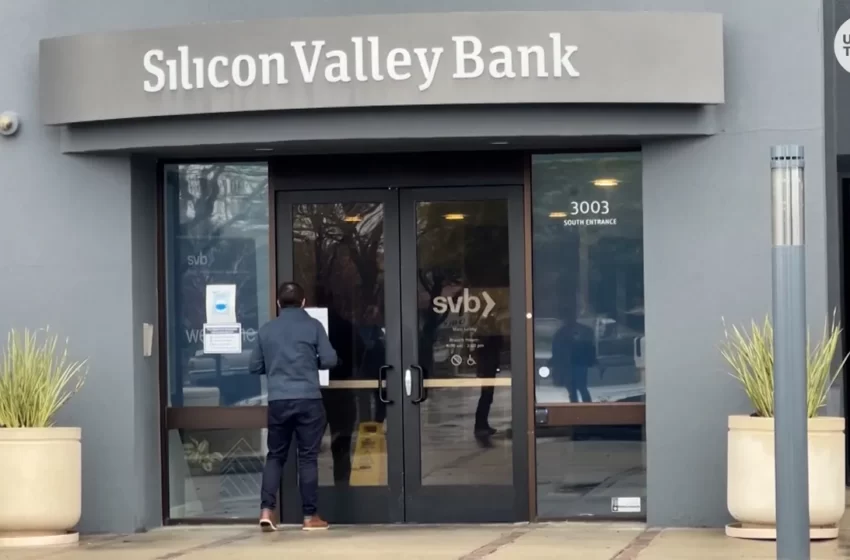
Silicon Valley Bank’s (SVB) Failure Felt a Lot Like GameStop Mania
The FDIC has promised to make SVB depositors whole. The backstory here is fairly simple: SVB had a lot of startup clients with large deposits, but the market swoon in venture capital and rising interest rates pushed them to withdraw funds.
That, plus clumsy messaging around the company’s not-yet-dire predicament, helped set off a classic bank run.
The Bank’s Failure Felt a Lot Like GameStop Mania
The collapse of Silicon Valley Bank sent shockwaves throughout the banking industry, arousing fears that a similar meltdown could happen elsewhere. And even though the government has stepped in to guarantee deposits at the now-defunct SVB, the fears have lingered. The story behind this collapse is worth telling and gives us a glimpse into how easy it would be for an entire banking sector to implode.
SVB was a small, regional bank that had billions in deposits but only about two dozen branches. It catered to a very specific clientele: startups, venture capitalists, and tech companies. It had a lot of power in the world of technology, and its failure felt like an ominous harbinger of economic turmoil.
On March 10, trading in SVB Financial Group stock was halted as regulators took control of the company. Deposits were moved to a bridge bank, and customers were assured that their insured deposits would be safe. During the chaos, the SVB stock price dropped more than 40%, and investors were left wondering what went wrong.
Investors also feared that SVB had substantial exposure to crypto entities and other digital assets, and that a failure could lead to a contagion effect. Several leading crypto firms, including Roku and Roblox, have released regulatory filings revealing that they hold significant amounts of cash and securities with SVB.
Some reports suggest that prominent crypto-focused VC funds, such as a16z and Pantera Capital, may have up to $5 billion in exposure to SVB. However, this information is based on scraped data and has not been independently verified. Investors should not rely on this information as the basis for any investment decisions.
The Banks Failure Felt a Lot Like The Subprime Mortgage Crisis
Despite the headlines, Silicon Valley Bank did not fail because of risky investments or fraud. It failed because it got caught in a classic bank run and couldn’t raise enough capital to cover the withdrawals.
Like most banks, SVB takes deposits and invests them in generally safe securities, such as bonds. But as interest rates have risen, those bonds have become worth less. That wasn’t a big deal when the economy was growing, but as venture capital-backed tech companies started to slow down and burn through their cash, many began to withdraw their money from SVB. In an attempt to keep up with the demand, the bank sold a bunch of bonds at a loss. That move set off a chain reaction, and within 48 hours the bank had collapsed.
The bank’s failure was exacerbated by the fact that it is a regional bank, serving only one sector (tech startups) and one region (NorCal). That makes it vulnerable to sudden changes in that sector or region. It also makes it harder for state and federal regulators to oversee it effectively, because the bank doesn’t operate in the same space as big national or Wall Street-based lenders.
Mike Konczal: SVB is a pretty unique bank in that it is the bank of choice for a very incestuous community. The founders of the startups and VC firms that use SVB all know each other, and they all talk to each other. So, when SVB made its capital raising announcement on March 8, word spread quickly that the bank was in trouble and people started to panic about getting their money out. That triggered a massive run on the bank, which is why California regulators shut it down and put it under the FDIC.
All insured depositors will get their money back, and SVB has been replaced by a new institution that will serve the same customer base. But SVB’s collapse is a warning that larger, more complex regional banks can be vulnerable to the same forces that led to the 2008 financial crisis. And the warning is especially important for small business owners who use those regional banks to fund their growth.
The Bank’s Failure Felt a Lot Like The Great Recession
For many Americans, the collapse of Silicon Valley Bank has sparked fears that our banking system is vulnerable. And it has fueled calls for tighter regulation. But the truth is, this bank failure felt a lot different than the implosion of banks like Lehman Brothers and Bear Stearns that triggered the 2008 global financial crisis. Here are three reasons why.
First, SVB was relatively small. And its deposits were mostly in cash. This means that a run on the bank was unlikely to cause widespread panic and recession. It could, however, cause a few months of shakiness for banks in general.
Second, SVB made a big mistake with its interest rate risk management. When interest rates were at historic lows, it was easy for banks to load up on long-term government bonds. But as interest rates rise, those bonds lose value. And in SVB’s case, those losses were large enough to spook depositors and lead them to withdraw their money.
As the withdrawals accelerated, the bank had to sell off its bonds at big losses and raise new capital. That spooked even more depositors, who rushed to pull their money out of the bank. In a matter of 48 hours, SVB was nearly empty. That forced state regulators to take control, putting the FDIC in receivership.
The SVB collapse has sparked concerns that other big banks could be in trouble. And that could spooke the stock market and hurt the economy. But the truth is that other big banks are well-capitalized and have strong balance sheets. And the FDIC has pledged to protect all depositors at SVB and other affected banks. So a run on these banks is unlikely to lead to a recession or the kind of banking crisis that sparked the subprime mortgage crisis.
So despite the headlines, it’s likely that SVB’s collapse won’t cause a bigger banking crisis than the one in 2008. But there is still reason to be concerned about what’s going on in Washington. Federal Reserve Chairman Jerome Powell is facing growing pressure to reverse the Fed’s recent move to raise interest rates.
The Bank?s Failure Felt a Lot Like The Financial Crisis
A 40-year run ended abruptly on Friday when California regulators shut Silicon Valley Bank down, claiming its deposits in what is the biggest bank failure since the 2008 financial crisis and the second largest ever. The collapse came after SVB signaled to investors that it might need to raise capital, which spooked clients into pulling their own money. That, in turn, prompted the bank to stop trading its shares and abandon efforts to sell itself. In the end, the bank was left with no choice but to declare bankruptcy and place itself in receivership—which means it will have to liquidate its assets to pay depositors and creditors.
SVB’s problems stemmed from its heavy exposure to tech companies and the Federal Reserve’s aggressive interest rate increases, which caused the value of the bond investments it held to fall. That in turn led to lower-than-expected profits and deposits that were being used for day-to-day operations, the bank said in its investor letter on March 8.
SVB’s troubles also echoed the 2008 financial crisis because it was a regional Fed bank that wasn’t subject to the same kinds of regulations as larger banks—including requirements that banks keep certain levels of cash on hand and submit to stress tests to ensure they can withstand losses. Congress passed a law in 2018 that allowed regional Fed banks to skirt those rules—but some economists have warned of the dangers ahead.
Bryant University professor Peter Nigro says that state and federal banking regulators have a lot to answer for in the wake of SVB’s collapse. He notes that during a recent Brookings Institution panel discussion on regional bank resolution, the head of the Federal Deposit Insurance Corporation stressed how such banks are more likely to experience problems because they don’t undergo regular risk-based examinations and are often less liquid than their larger counterparts.
SVB’s collapse has spooked customers at other banks and raised concerns about the overall health of the industry. While the Biden administration emphasized that it was not a bailout when announcing that uninsured SVB and Signature customers would be made whole, some critics have been quick to point out that taxpayer funds are still being used.







